By John Walker
In early 1967, the thinly populated, rugged, and mountainous Khe Sanh plateau lay in the northwest corner of South Vietnam, bordered by Laos to the west and the Demilitarized Zone (DMZ) and North Vietnam to the north. The vast region was obscured from aerial observation by high, dense, triple-canopy foliage. Elephant grass and bamboo thicklage, recruiting Bru montagnard villagers into a Civilian Irregular Defense Group (CIDG). That September, another Special Forces detachment arrived to oversee the construction of a rudimentary but fully operational air strip. The village was located on Route 9, an old one-track French road linking the Vietnamese coast with Laotian market towns along the Mekong River. Roughly 1,500 people lived in the village, with another 10,000 Brus living in a dozen villages scattered nearby.
In April 1966, a Marine battalion passed through the area during a sweep-and-clear operation. That October, after the airstrip had been improved and lengthened, the 1st Battalion, 3rd Marine Regiment (1/3) and an artillery battery moved into the base at the urging of General William C. Westmoreland, commanding general of American forces in South Vietnam. Westmoreland had begun looking at the base as a potential jumping-off point for future operations in Laos against the Ho Chi Minh Trail, the major North Vietnamese infiltration route into the south. The arrival of the Marines forced the Green Berets to relocate to a new base camp nine kilometers to the west at Lang Vei.
Vicious Fighting With Heavy Casualties
In early 1967, the North Vietnamese Army (NVA) began moving large numbers of troops into the hills north of Khe Sanh. That April and May, vicious fighting broke out when the Marines battled the NVA for control of three hilltops overlooking the base in what became known as the Hill Fights. The Marines of 1/3 moved out against Hills 861, 881 North, and 881 South west of the village. Two NVA regiments were waiting, dug into a superb system of camouflaged bunkers. Lt. Gen. Robert Cushman, III Marine Amphibious Force commander, rushed another battalion of infantry to Khe Sanh when the fighting intensified. Marine air strikes and artillery helped blast the enemy off the hills. On May 5, after 12 days of fighting, the Marines gained the last of the three hills; 160 Marines died and another 700 were wounded. The number of confirmed NVA dead totaled 940, with many more wounded. The NVA moved their battered forces east and began harassing the Con Thien combat base.
On May 11, the 1st Battalion, 26th Marine Regiment (1/26) replaced the 3rd Regiment. One company of Marines from 1/26 was posted on Hill 881 South and another on Hill 861. On May 13, the headquarters battalion of the 26th arrived at Khe Sanh; in mid-1967, a Marine pacification company and a South Vietnamese Regional Forces company took up positions at Khe Sanh village. These moves were meant to deny the NVA an invasion route through Laos into the heart of Quang Tri province.
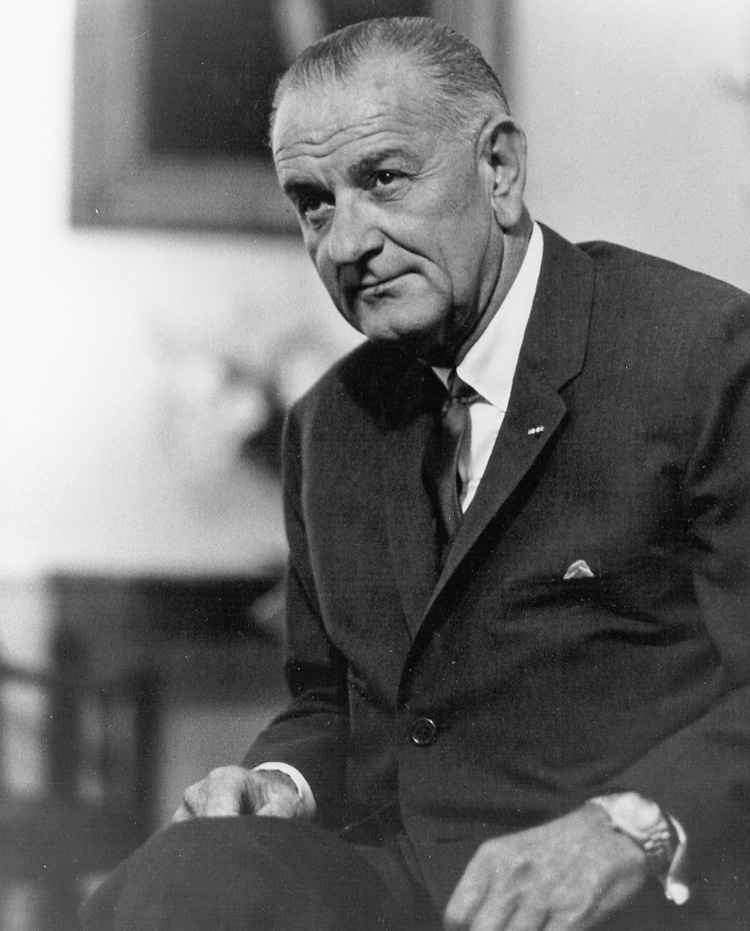
Ambush at the Marine Convoy
In August, the North Vietnamese ambushed a Marine convoy en route west to Khe Sanh; the convoy turned back and the Americans reluctantly acknowledged the closure of Route 9. Soon, U.S. intelligence detected parts of two or three enemy divisions, backed by two artillery regiments, moving toward Khe Sanh. Westmoreland responded by building up Marine strength and began making plans to have giant B-52s deluge the attackers in a devastating bombing cascade dubbed “Operation Niagara.” The Marines moved to strengthen their defenses. Unfortunately, they were short on engineering materials, and the local lumber was substandard. On December 13, the 3/26 deployed to Khe Sanh. Colonel David Lownds, the regimental commander, now had all three of his battalions on hand at the base.
Westmoreland traveled to Washington in the late fall of 1967 full of optimism—he could taste victory. He claimed that the North Vietnamese and their South Vietnamese allies, the Viet Cong, had reached the “crossover point,” the point at which they were suffering so many casualties, prisoners, desertions, and illnesses that their ability to replace their losses through recruitment and infiltration had been exceeded.
A Major Change in Strategy for the North Vietnamese
In the face of such worsening news, the North Vietnamese leaders, stung by reverses on southern battlefields and fearful of an American invasion of their homeland, instituted a major change in strategy. They conceded that their protracted-warfare tactics weren’t working. Instead, if the Communists determined that the United States was not going to launch a northward invasion, they would implement a three-phase winter-spring offensive to encourage a spontaneous uprising in the South. At the same time, they would begin implementing political and diplomatic initiatives. The fight-negotiate scheme had worked well against the French; now it would be used against the Americans. The Politburo issued Resolution 13, which spelled out the change in strategy and called for a general offensive and uprising to take place in early 1968.
North Vietnamese chief of staff and minister of defense General Vo Nguyen Giap, one of the group known as the “North Vietnam-firsters,” opposed the plan. He still believed that an American invasion of North Vietnam, Laos, or both was the biggest threat. Accordingly, he kept 300,000 NVA troops at home; every hamlet and village had prearanged bunkers and fighting positions. Even schoolgirls took bayonet training. Because of Giap’s opposition to the new Politburo plan, command of the offensive was given to Viet Cong leader General Nguyen Chi Thanh, but when Thanh died in July 1967 after being wounded in an American bombing raid, Giap was given the task of planning and carrying out the 1968 offensive.
The DMZ As Proving Ground
Giap ordered a series of attacks near the DMZ to see how the United States would respond. Repeated attacks against Cam Lo, Con Thien, the Rockpile, Khe Sanh, and Camp Carroll served as the test. Giap deployed almost six divisions in or near Quang Tri province for these attacks. When Westmoreland responded by sending more units and firepower into the area but not crossing the DMZ, Giap had his answer: no American invasion of his country was forthcoming. He immediately ordered the three-phase offensive to begin. In Phase I, lasting from October to December 1967, the NVA and Viet Cong would mass forces and conduct battles along the border regions of the Central Highlands to attract U.S. units and allow the Viet Cong to infiltrate into the cities to prepare themselves and the civilian populace for the upcoming offensive.
Giap ordered a series of attacks near the DMZ to see how the United States would respond. Repeated attacks against Cam Lo, Con Thien, the Rockpile, Khe Sanh, and Camp Carroll served as the test. Giap deployed almost six divisions in or near Quang Tri province for these attacks. When Westmoreland responded by sending more units and firepower into the area but not crossing the DMZ, Giap had his answer: no American invasion of his country was forthcoming. He immediately ordered the three-phase offensive to begin. In Phase I, lasting from October to December 1967, the NVA and Viet Cong would mass forces and conduct battles along the border regions of the Central Highlands to attract U.S. units and allow the Viet Cong to infiltrate into the cities to prepare themselves and the civilian populace for the upcoming offensive.
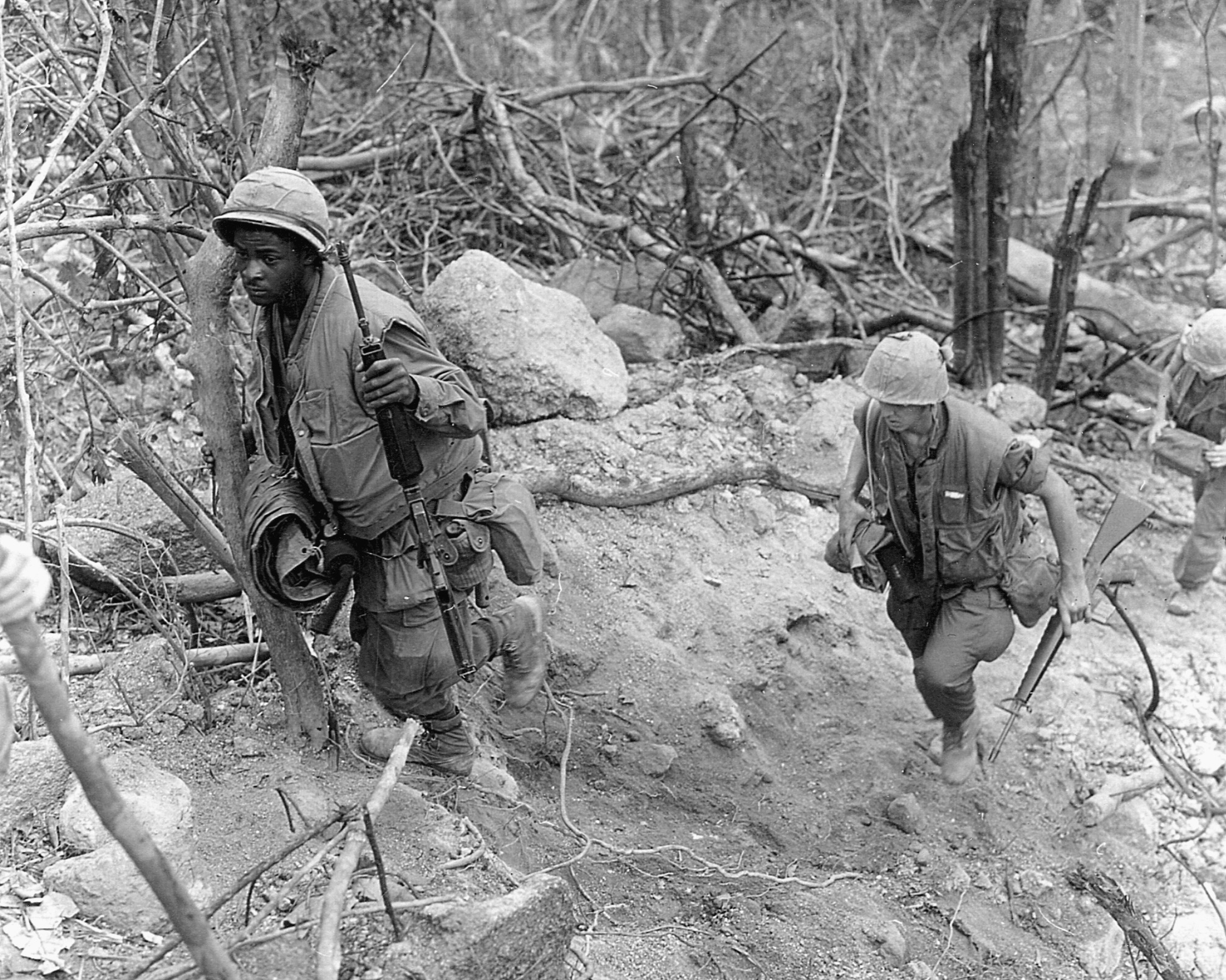
Phase II, from January to March 1968, would be the actual uprising, the so-called Tet Offensive. The Viet Cong would launch attacks on the cities and bases and appeal to the people of South Vietnam to join the uprising. As the Politburo envisioned it, the South Vietnamese Army (ARVN) would melt away and the people would rise up spontaneously against the government of President Nguyen Van Thieu and rally to the Communist side. Meanwhile, diplomatic efforts would get under way, calling for peace negotiations and the recognition of a coalition government in the South.
Phase III would see NVA divisions cross the DMZ to attack American units surrounded by the uprising. The U.S. bases would be islands of resistance in a sea of unfriendly faces. A massive second wave of North Vietnamese troops would drive into the lowlands, creating the conditions necessary for eventual military victory.
In furtherance of the grand design, Giap massed several divisions, equal in size to a U.S. Army corps, into the “Route 9 Front.” He sent these divisions to the juncture of the borders of Laos and North and South Vietnam. Giap wanted to test American responses one last time before the planned offensive. If this corps-sized presence didn’t trigger a U.S. invasion, Giap would give the order for Phase II to begin. In its position near Khe Sanh, the Route 9 Front could launch a counterattack against an American invasion of the North or act as a blocking force against an Allied incursion into Laos.
The Route 9 Front would also be used to start the second wave of troops heading south during Phase III. Hanoi wanted to open a gap in the Allied defenses south of the DMZ through which North Vietnamese divisions could pour into the South. The purpose of the Route 9 Front, then, was to attract and destroy Allied forces, enabling the Viet Cong to launch the Tet Offensive and, when conditions permitted, breach a section of the Allied defensive line. When the Route 9 Front itself began moving toward the Khe Sanh area, it was not meant to capture Khe Sanh, nor did the village necessarily figure into Giap’s plans as a major diversion, to say nothing of being the climactic battle of the war.
While Giap was busy making his preparations, Westmoreland was busy as well, working on his two chief objectives for late l967: to defend I Corps in the north and launch an operation into Laos. Westmoreland felt that Giap’s most logical move would be to try to overrun the two northernmost provinces, Quang Tri and Thua Thien, while at the same time launching lesser attacks throughout South Vietnam. (American headquarters in Saigon was expecting a Tet-like offensive, but was surprised by the size and intensity of the attacks when they came.) Westmoreland worried that if the NVA were able to seize large portions of the northern sector, they would attempt, in conjunction with a general uprising, to set up a “liberated government” zone there. Khe Sanh’s fall would pave the way for a North Vietnamese offensive into Quang Tri province. To prevent this from happening, Westmoreland intended to hold Khe Sanh at all costs.
On January 2, 1968, six NVA dressed as Marines were spotted reconnoitering the base. After they failed to respond to a challenge, gunfire erupted and five of the six were killed. The dead, when searched, consisted of a regimental commander and his staff. Obviously, something important was imminent for the enemy to send out such a high-ranking patrol. To Westmoreland and Lownds, the incident clearly indicated that an attack against Khe Sanh was impending.
For his part, Westmoreland was thrilled. If the NVA wanted to mass large numbers of troops near American defensive positions as they had done the previous autumn at Dak To and Loc Ninh in the Central Highlands, he would be glad to accommodate them. The enemy forces were a threat to the Marines, but they were also an opportunity for the Air Force to direct concentrated air strikes against them on a sustained basis. The total enemy force available for battle could go as high as 40,000 troops. The target was so alluring that Westmoreland ordered all intelligence-gathering activities to focus on Khe Sanh. At the same time, the Air Force sowed state-of-the-art seismic and acoustic sensors around the base. Almost immediately, the sensors picked up movement to the west and north.
Captain William H. Dabney’s India Company held the top of Hill 881 South, four miles northwest of KSCB; his defensive preparations had turned the hill into a virtual fortress. Reinforcement overland, however, was impossible because of the rugged terrain. Closer to the base, half a mile east of Hill 881S, was Hill 861, a dominant terrain feature vital to the defense of the base and airfield. Captain Norm Jasper and 200 men of K Company were dug into its crown. The base itself was well protected by an array of armor, artillery, mortars, recoilless rifles, 40mm cannon, and .50-caliber machine guns. The base could also call on the 175mm guns at Camp Carroll and the Rockpile, as well as tactical air strikes, all in addition to the awesome firepower offered by American B-52s.
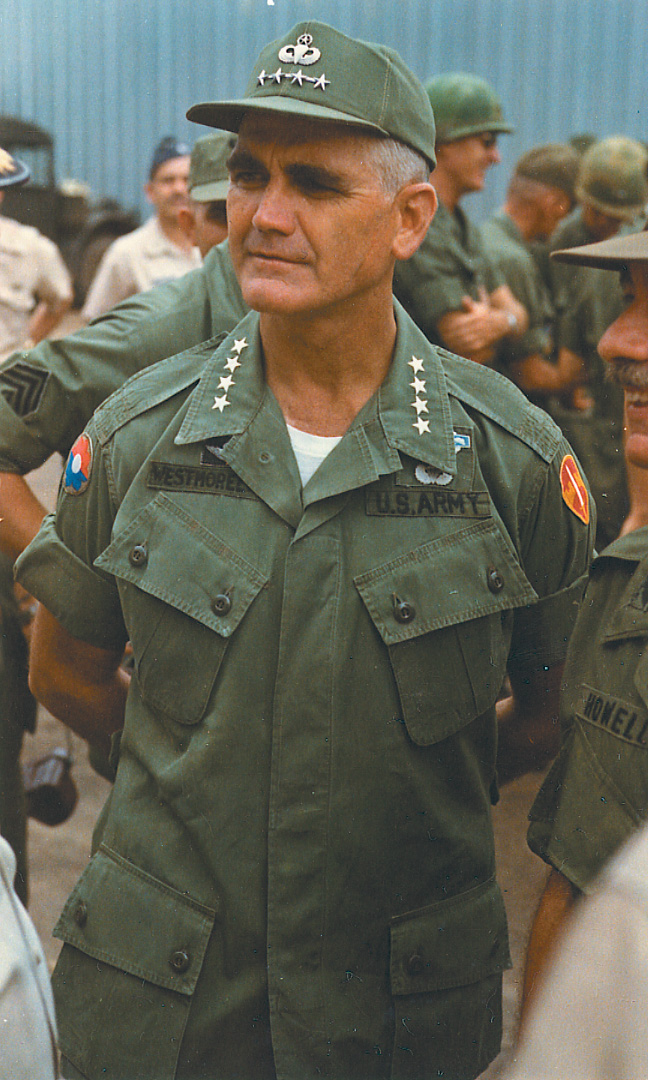
The Rao Quang River flowed past the base and could provide cover for an approaching enemy. Accordingly, Lownds sent 1,000 men from the 2nd Battalion to Hill 558, which overlooked the river valley, to plug the gap. The new position was just east of Hill 861. The Marines’ water supply was located outside their perimeter and therefore was vulnerable to NVA attack or contamination. In one of Khe Sanh’s many mysteries, Giap chose not to disturb the Marines’ water.
The Battle of Khe Sanh began on January 20, 1968, when Dabney and I Company, some 185 men, set out on a reconnaissance-in-force mission. When the morning fog lifted, the Americans clashed with a battalion of North Vietnamese between Hills 881S and 881N. Several hours into the fight, Lownds radioed Dabney to get his men back to 881S before nightfall—an NVA deserter picked up that day had proven to be a gold mine of intelligence. Lieutenant La Than Tonc confirmed the presence of two NVA divisions in the area and detailed their plans for that night: Hills 881S, 861, and KSCB itself would be attacked.
As the defector had predicted, a battalion of NVA began pounding Hill 861 just after midnight with rockets, mortars, machine guns, and rocket-propelled grenades before attacking the southwest slope of the hill. Dac Cong, or sappers, led the way, breaching the perimeter wire and hurling bangalore torpedoes and satchel charges into bunkers. Marine machine guns punished the attackers, but enough survived to overrun part of the position in vicious fighting. The Marines pulled back to higher ground. Mortars fired from 861 and 881S kept NVA reinforcements from exploiting the breakthrough. K Company rallied and by 5:15 am had driven the attackers from the perimeter. In all, 47 bodies were found on the wire, and more were left near the bottom of the hill. An enemy force equal in size to that which hit 861 had been en route to attack 881S. Sensors picked up the movement, and interdicting fire stopped the assault before it could get under way.
At 6:30 that morning, the NVA attacked Khe Sanh village in strength, but the outnumbered defenders held on. A second attack later that day was stopped by machine-gun and artillery fire, but Lownds, expecting another attack at any moment, decided to evacuate the village. The Americans were taken out by helicopter; the Viet officials and soldiers had to walk. Soon, some 1,500 refugees crowded the base. On January 22, the ARVN commander allowed ethnic Vietnamese to be airlifted out of Khe Sanh, but refused to evacuate the Brus, who were peremptorily ordered away.
While the village was being hit, the North Vietnamese troops hidden on Hill 881N began the siege of the combat base. Hundreds of 82mm mortars and 122mm rockets rained down on the base, sending the defenders scrambling for cover. Explosions rocked the enclave. The airstrip was damaged, helicopters were tossed about, bunkers collapsed, tents blew away, and whirring shrapnel filled the air. One of the first incoming rounds scored a direct hit on the main ammunition dump. A huge explosion rocked the eastern end of the base as almost 1,500 tons of munitions went up in flames. Burning debris and unexploded shells rained down on the defenders, while large drums of aviation fuel erupted, sending flames into the ammo dump. Fog masked the NVA rocket sites; incoming shells blasted the base all day. The Marines were vulnerable to ground attack, but the North Vietnamese only probed the perimeter in small groups.
Communication on the base was lost. Tear gas rounds exploded, drenching the base with burning crystals. KSCB was literally being shelled from without and within. Eighteen Marines were killed and another 40 were wounded. With Route 9 closed and NVA soldiers between them and Lang Vei, the Marines were cut off and totally dependent on aerial resupply. It took 48 hours for the base to return to some semblance of order.
After the initial attacks on January 21-22, a pattern was established; every day the base and hilltops would be punished by rockets, artillery, and mortars, while U.S. firepower expended tons of high explosives and napalm on suspected NVA troop and headquarters locations. The day after the first attack, Giap, confident that North Vietnam would not be invaded, gave the order for Phase II, the Tet Offensive, to proceed as planned.
Concerned, Westmoreland ordered Cushman to send Lownds some help. Within days the 1st Battalion, 9th Marine Regiment was airlifted into Khe Sanh, along with 320 ARVN Rangers. One thousand reinforcements from 1/9 were sent to block the western approaches to the base. Marine map readers found a rocky spur lying between Hills 861 and 558; Lownds moved 200 men onto this ridge, naming the new position Hill 861 Alpha.
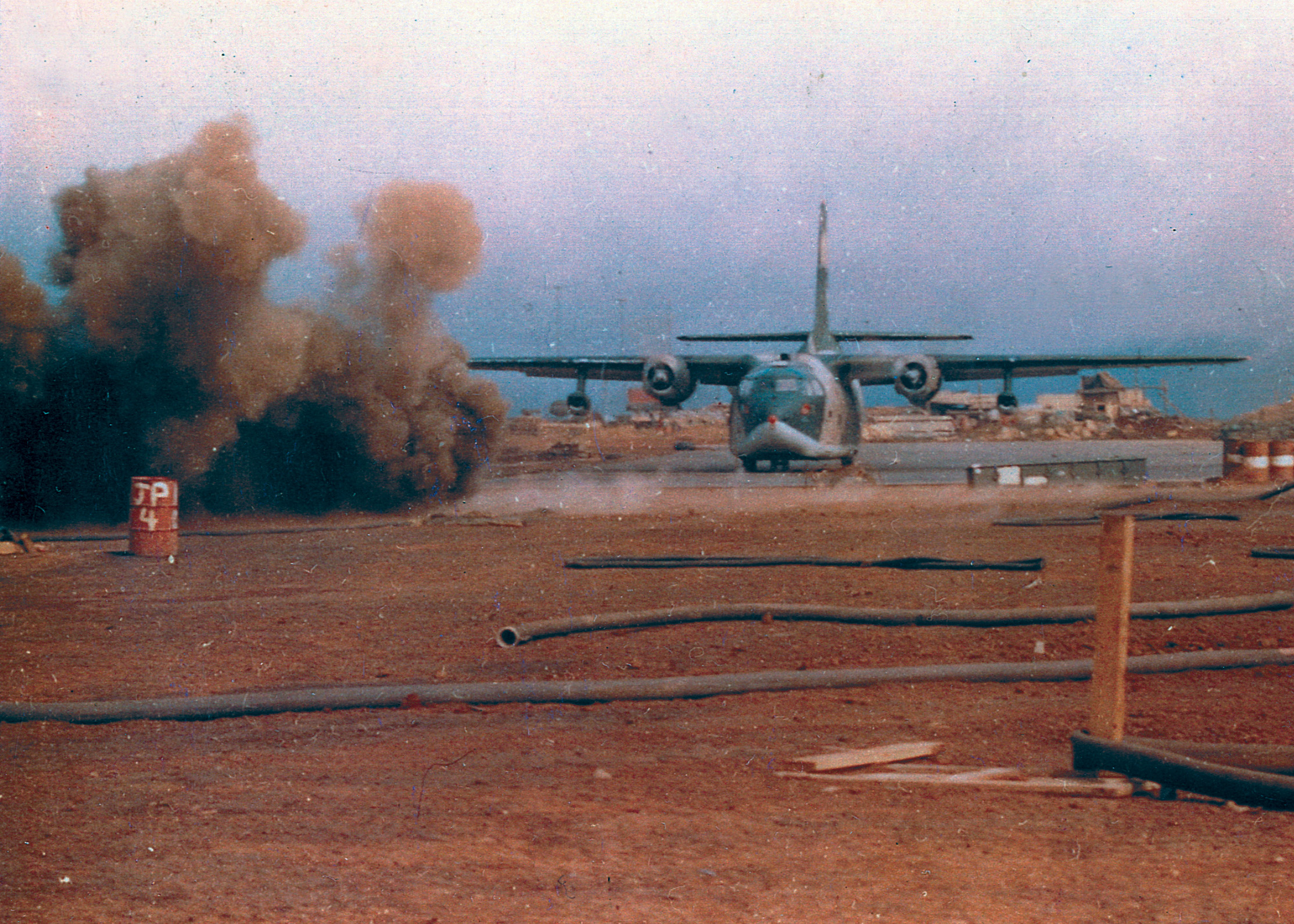
About half of Lownds’ force was now inside the perimeter; a contingent of 450 indigenous troops under Army Special Forces control held the base’s southwest perimeter. This was almost a separate compound; it held Montagnards, Nungs, Laotians, and others. Lownds, not fully comfortable with this complement of irregulars inside his perimeter, stationed his six tanks directly behind their lines. As of January 23, the Allied force included 5,800 Marines, 228 Navy and 75 Army personnel, and some 700 Vietnamese troops and CIDG tribesmen.
One of the longest battles of the war had begun. It was only 10 days before Tet, the Vietnamese celebration that on January 30 would usher in the Year of the Monkey. The fighting around Khe Sanh would rivet the attention of the U.S. military, the American people, and the rest of the world. President Lyndon Johnson, who had escalated the war to mammoth levels, would spend many nights in the basement of the White House, where a model of Khe Sanh had been constructed, poring over cablegrams from Saigon.
By l967, protests and riots were draining the nation’s will. Johnson was tortured by the increasingly unpopular war but, fearful of a major North Vietnamese victory, he began to demand detailed daily reports on the situation at Khe Sanh. The president badgered the chairman of the Joint Chiefs of Staff, General Earle Wheeler, every day, and had each member of the JCS assess the situation and assure him that Khe Sanh could be held. Johnson was terrified by the similarities between Khe Sanh and Dien Bien Phu, the decisive battle—also engineered by Giap—that brought an end to French hegemony in Indochina a decade earlier.
Westmoreland had planned and prepared for battle at Khe Sanh. He knew the enemy forces had been weakened by their losses at Loc Ninh and Dak To, the war’s biggest battle to date, and he was certain his forces would go into battle with overwhelming superiority in firepower, mobility, and flexibility. On January 21, Westmoreland ordered Operation Niagara to begin—the Khe Sanh garrison would be backed by an unprecedented array of aerial firepower. He also moved 12,000 members of the 1st Air Cavalry Division and 5,000 paratroopers of the 101st Airborne Division into base camps 30 minutes from Khe Sanh—he was leaving nothing to chance. The general even broached the possibility of using a “few tactical nuclear weapons” if necessary to hold the beleaguered base.
At 3 am on January 30, 1968, six cities in the Central Highlands and in the central coastal provinces of South Vietnam were attacked by the Viet Cong. By dawn, most of the attackers had been driven from their objectives. These were premature attacks; Giap had postponed the assault for 24 hours, but not all his units had been notified. It cost Giap the most crucial element in the plan: surprise. The entire U.S. command went on full alert.
On the night of January 30-31, the nationwide attacks began. Most were repelled in a fairly short period of time. The Communists committed 84,000 troops to the offensive and achieved temporary control of 10 provincial capitals, but the general uprising ultimately failed, largely because the ARVN fought well and the South Vietnamese people did not rally to the Communist side. In all, some 64 district capitals were attacked, along with 36 of 44 provincial capitals and scores of smaller towns. Heavy fighting continued in Saigon for two weeks, where the bodies of dead Viet Cong infiltrators inside the U.S. Embassy grounds shocked the American television audience. In Húe, the ancient imperial capital, 25 days of desperate fighting raged before ARVN and Marine forces retook the city.
The appalling casualties sustained by the Communists during the fighting reflected the magnitude of their loss. While the Allies lost 4,234 killed and 16,063 wounded, the North Vietnamese and Viet Cong lost an incredible 45,000 men killed and wounded and almost 7,000—captured, half their attacking force. The National Liberation Front was effectively destroyed as a fighting force, and the Viet Cong also lost most of their underground political cadres, who had surfaced during the fighting and could never again return to the shadows.
The Tet Offensive sent waves of confusion and dismay across America. Although the Allies had been expecting an attack, the American public had not been warned. The media reported Tet as an American defeat, and Johnson failed as a political leader, making no attempt to rally his disoriented people. The extensive television coverage of the brutal fighting shattered public morale and eroded popular support for the war. When the Politburo realized that their loss on the battlefield had become a psychological victory for them within the United States, they decided that the war might be won by using the news media, academia, antiwar dissenters, and Congress itself. Hanoi began an intensive, calculated program within the United States to erode American morale and support for the war.
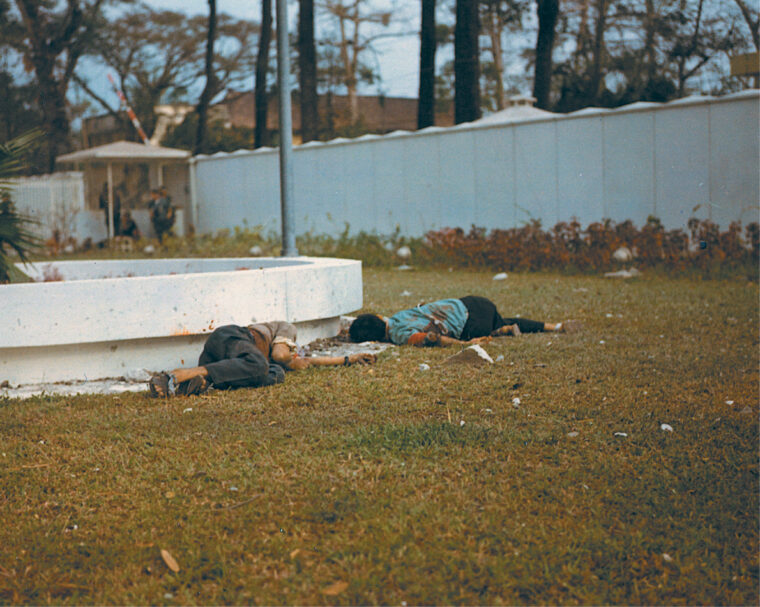
Khe Sanh wasn’t attacked during Tet, but Westmoreland steadfastly believed it remained the chief target. As February began, five veteran NVA divisions were still deployed south of the DMZ. The base had become a reeking trash heap as a result of round-the-clock shelling, digging, and bulldozing. Thick, red dust cast a pall over everything. Broken wood and shrapnel littered dugouts and trenches, and rotting sandbags and debris gave the base a distinctly shantytown look. Short of water, the Marines seldom bathed or shaved; their uniforms became filthy and tattered. The inability to stop the constant shelling wore them down. They also resented their defensive posture—it was contrary to their heritage. They denied that they were being besieged, since they patrolled outside the wire every day, but the patrols were limited to a few hundred feet—only as far as the Marines could see with the naked eye.
An impenetrable gray monsoon fog settled over the base, reducing both ceiling and visibility to zero. Airlift operations were hampered; the NVA had zeroed in on the approach route. It became too risky to land the big C-130 transports, and flying them blindly onto a damaged airstrip was ruled out by Air Force General William Momyer. The lighter C-123s continued to land, but were escorted by fighters. The C-130s began to deliver supplies from the air, at times parachuting loaded pallets into the enclave, at other times sliding them from the rear of the planes as they skimmed five feet above the runway.
In the early morning of February 5, an intense artillery, rocket, and mortar attack hit the base and the hilltop outposts. At 4 am an NVA battalion charged Hill 861 Alpha; Marine artillery shells rained down and created a ring of fire around the Marines holding the hilltop. Enemy sappers pierced the wire, overrunning portions of E Company in some of the fiercest fighting of the siege. By 5:30 am the attackers had taken a quarter of the hilltop. The Marines pulled back and donned gas masks. As tear gas flooded the hill, a Marine counterattack caught the NVA troops foolishly looking for souvenirs in empty foxholes. In hand-to-hand fighting and short-range grenade duels, the defenders cleared the hill. The Marines lost 40 men; 109 dead North Vietnamese lay draped across the wire or inside the perimeter.
Two nights later the fighting resumed. Before dawn on February 7, NVA troops led by nine Soviet-built light tanks and armed with flame-throwers overran and destroyed the Special Forces camp at Lang Vei—the first use of armor by the Communists in the war. The defenders put up a stiff fight, knocking out several tanks with a variety of weapons. Tank fire destroyed bunkers and damaged buildings; at dawn the operations center was surrounded. Survivors inside were stunned and bloodied. Lang Vei had stood alone since the village of Khe Sanh had been evacuated. Over half of the 500 CIDG defenders were killed, wounded, or missing. The Green Berets lost 10 men out of 24, with 11 of the survivors wounded. The defenders radioed Lownds for help, but the colonel had no options. He couldn’t send a relief force into the dark for fear of ambush, and moving troops overland south of Route 9 would take too long. Attempting to land relief troops by helicopter onto a base already in enemy hands invited disaster. All Lownds could do was send helicopters in the morning to extract the wounded. Thousands of refugees and 200 survivors of the battle trekked eastward toward KSCB.
That morning, some 5,000 military and civilian refugees materialized at the front gate of the combat base, blocking the Marines’ field of fire. The new arrivals were Laotian troops and their families, CIDG troops, ARVN Special Forces, and thousands of Bru montagnards. Lownds ordered all weapons seized and the crowd dispersed. The Laotians had nowhere to go but west on Route 9, now blocked by North Vietnamese infantry. Some Bru families headed east toward Quang Tri, while others headed back to their hamlets. Many of the refugees, after first being refused admittance, were later allowed to enter the base and were quickly airlifted out.
Westmoreland flew to Da Nang that morning. He had lost confidence in the Marines. The unprotected installations on the base and what he perceived as a general lack of preparation to withstand heavy mortar and artillery fire disturbed him greatly. Westmoreland decided to establish forward headquarters at Phu Bai, and chose his deputy, General Creighton Abrams, to control operations in the area. The move naturally angered the Marines. After a month, Westmoreland replaced the forward command with an army corps under General Cushman.
In early February, the Americans believed the climactic phase of the war had come. Westmoreland cabled Washington on February 9 that the “third phase of the Tet Offensive, which is yet to begin, will involve consolidation of the enemy’s positions and a strong attack across the DMZ and against Khe Sanh. Their objective is to establish military control over the two northern provinces.” Three days later he cabled the JCS that he desperately needed reinforcements to avoid a major risk to South Vietnam as he moved troops north to meet the threat. In early March, Westmoreland asked for 206,000 additional troops.
While mortars rained down on Khe Sanh in the predawn hours of February 8, a battalion of NVA infantry charged Hill 64, a spur of ground just west of the rock quarry defended by a reinforced platoon of Marines from A Company, 1/9. Holes were blasted in the wire and the defenders were surprised and almost overrun; 21 Marines were killed and 29 wounded, but the Americans checkmated the superior enemy force for several hours in savage fighting, holding onto a small piece of the original perimeter. At first light, the remainder of Alpha Company, advancing from the quarry behind artillery fire and two tanks, rescued the survivors and recaptured the ground that was lost. The company commander reported 150 enemy killed in action.
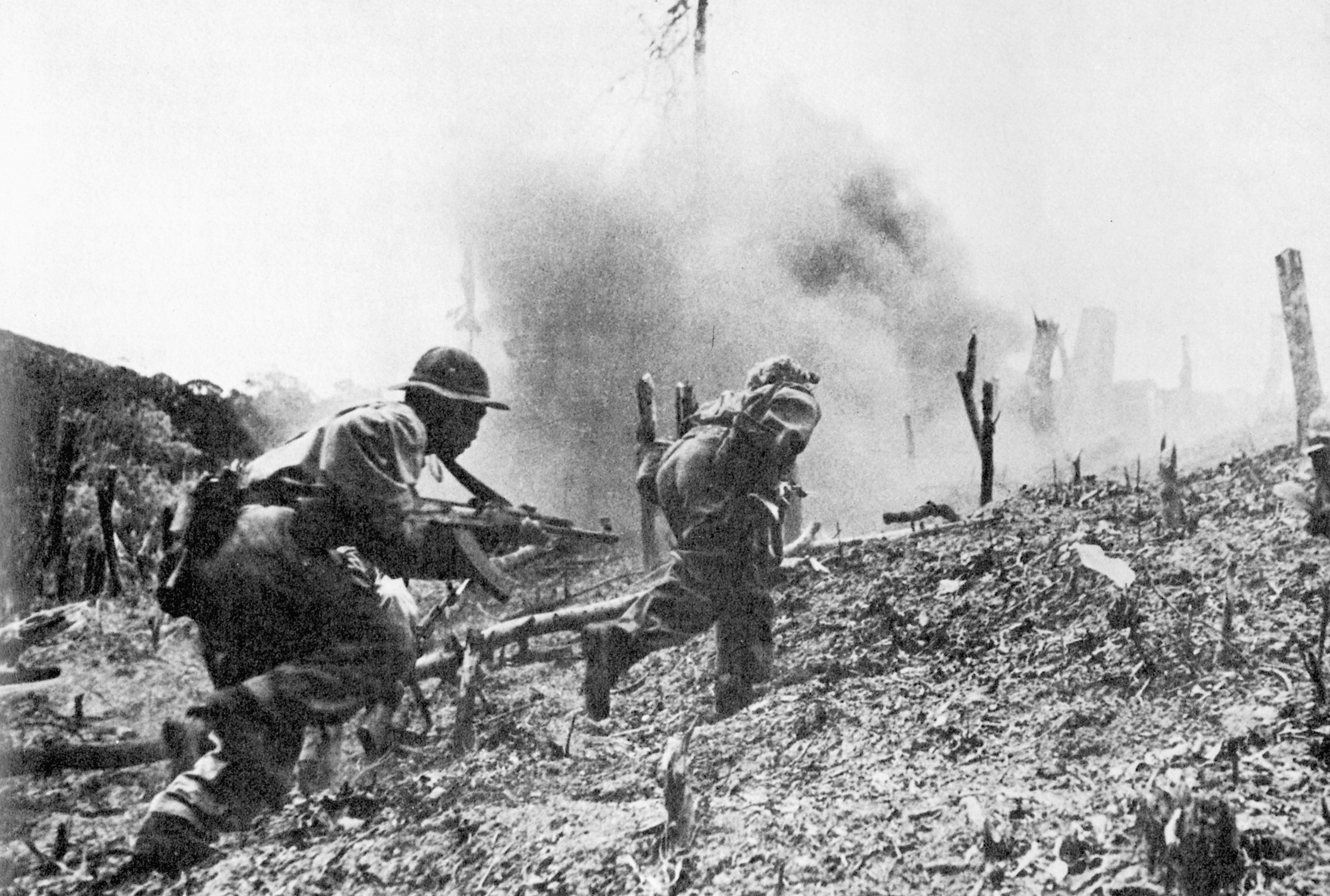
The NVA continued to shell the base and the hilltops throughout February and March. Shelling reached a peak on February 23 when an estimated 1,307 artillery and mortar rounds fell on Khe Sanh; 10 Marines were killed and 30 wounded. The world watched on their television sets.
For the Marines and their allies inside KSCB, February was a blur of fog, rain, daily bombardment, mud, stench, rats, and the constant fear of a massive ground attack. As the shelling continued, the defenders dug their trenches to shoulder height and moved underground. Enemy gunners had locked in on the airstrip and shelled it at all hours of the day and night, turning aerial operations into pure hell. The Marines couldn’t sleep under such a pounding, and foul weather robbed them of hot food, water, ammunition, and quick medical care.
Khe Sanh wouldn’t have survived without one of the biggest aerial resupply efforts in history. In February, while the Tet Offensive ran its course, resupply missions were flown through dense fog, enemy fire, or both. Medical evacuations were chaotic—helicopters landing on the runway to pick up the dead and wounded were an inviting target for NVA gunners. The aid station had a deep bunker close to the airstrip where the wounded waited on stretchers to be carried to the helicopters and loaded under hostile fire. While a chopper waited on the landing pad or a C-123 turned and began its approach to takeoff, waiting Marines, news reporters, and litter bearers would make a mad dash to the aircraft and jump aboard. More often than not, passengers could hear and feel the impact of enemy fire on the departing aircraft. One C-123 carrying reinforcements was hit by ground fire and crashed, with a loss of 48 killed.
On February 25, 29 men from Bravo Company, 1/26, led by Lieutenant Donald J. Jacques, set out on a recon patrol; they were ambushed and a 50-man relief force was also hit and pinned down. The Marines lost 25 men missing and 21 wounded as they fought their way back to the base; against tradition, the Marines left their dead on the field. A dozen enemy trenches were found close to the base. Shocked, the Allies began close-in bombing by the B-52s inside the two-mile limit set to protect troops. But the bombs didn’t stop the digging. On February 29, the trenches reached to within 350 feet of the wire. Khe Sanh was now a cover story in Newsweek and Life magazines, the lead story on evening news reports, and front-page news in the nation’s newspapers.
Quick reaction to intelligence reports squelched possibly the biggest threat to the base in late February. In the early evening hours of the 29th, sensors along Route 9 picked up a major troop movement by the 304th toward Khe Sanh from the east. Immediately, the Fire Support Control Center called for maximum fire against the area; artillery, radar-equipped jets, and B-52s pounded the attackers as they approached. At 9:30 pm, a North Vietnamese battalion charged the sector held by the 37th ARVN Rangers; the attack dissolved before it reached the perimeter. At 11:30 pm and again at 3:15 am, NVA battalions tried but failed to get closer than 100 yards from the perimeter, leaving 78 bodies close to the base. According to Bru patrols, hundreds of dead soldiers were left behind when the NVA exited the area. This regiment-sized attack was the largest ground effort by the Communists during the siege and marked a turning point. The North Vietnamese made no further attacks against the base or its hilltop outposts.
Although the Allies weren’t fully aware of it, Giap, responding to changing conditions on the battlefield, had begun withdrawing some of his forces from Khe Sanh. He sent five battalions east to Húe to reinforce his troops fighting there and began preparations to extract his remaining forces from the Khe Sanh plateau. Giap continued to harass the base—not as a diversion, but because Phase II had stalled and he wanted desperately to get the offensive going again. When it became clear that Phase II had failed, Giap cancelled plans for launching a second massive wave of troops across the Route 9 line. I Corps had been stabilized and secured.
March brought an end to the monsoons and fog, and with it clearer observation of enemy activity. The pressure on the base seemed to ease; intelligence suggested NVA troop levels were falling rapidly. Marine and ARVN patrols left the base, searching for the enemy. In early March, the remaining North Vietnamese troops began withdrawing from the area and stopped rebuilding their trenches around the base. Lownds’ two main concerns now were aerial resupply and continued shelling by the enemy.
The bodies of 25 Marines still lay 800 meters southwest of the base, killed in the ambush of February 25. On the 30th, Bravo Company, 1/26 left the perimeter and attacked the NVA trench line, using flame-throwers, bayonets, and satchel charges to kill 115 of the enemy and destroy numerous bunkers. To their regret, they were unable to retrieve the bodies of their fallen comrades.
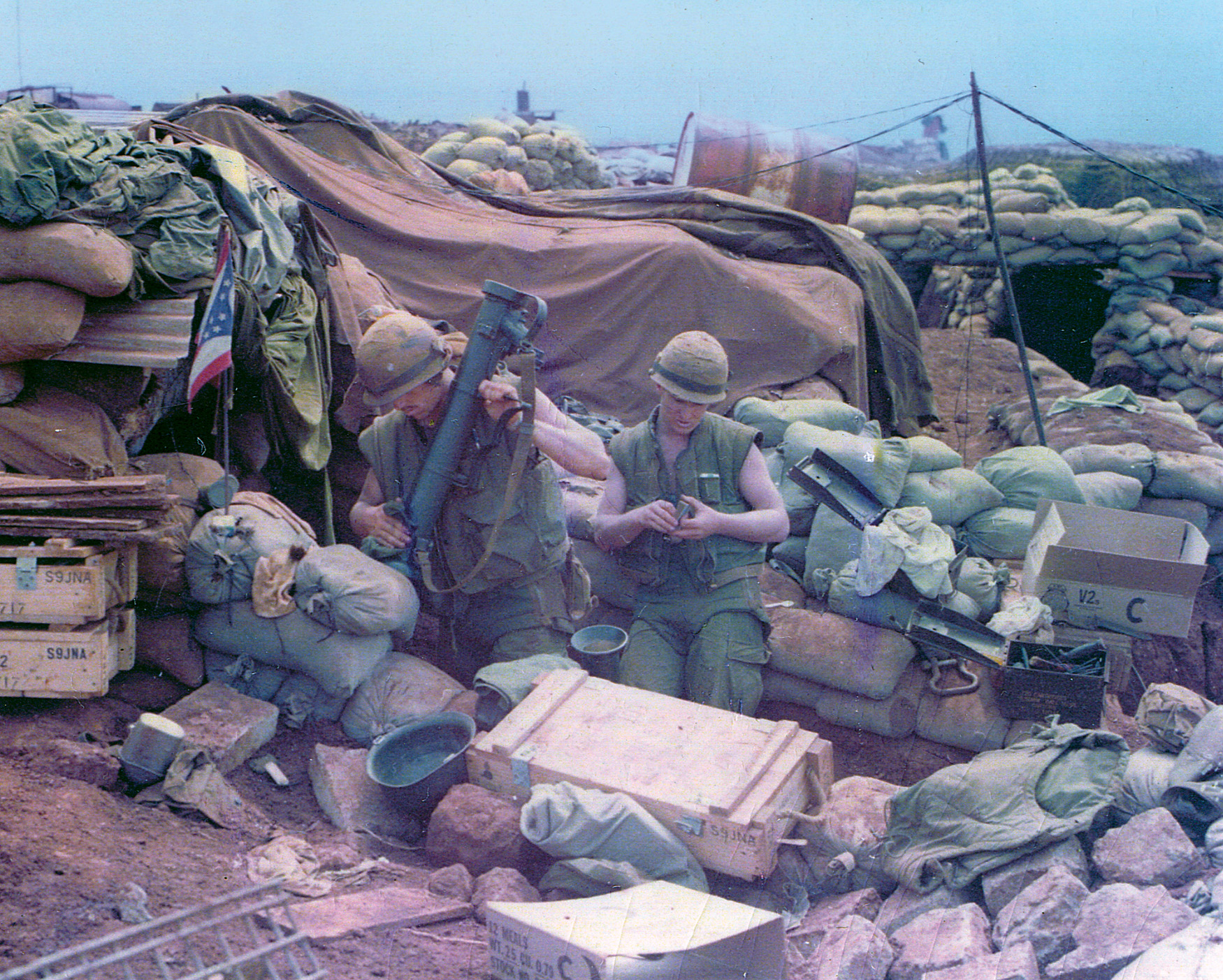
During February and March, shocked by the Tet Offensive, the American people began to reconsider U.S. involvement in Southeast Asia. In March, one in five Americans switched from supporting the war to opposing it. On the 22nd, Johnson announced that Westmoreland would be replaced later that year. Nine days later, the president dropped an even larger bombshell, telling the American public on national television that he would not seek reelection and announcing a bombing halt above the 19th Parallel in hopes of bringing the Communists to the bargaining table.
Westmoreland, now short on time, made plans to relieve Khe Sanh before he left the country. The 1st Air Cavalry would lead the way. A heavy base was already being built at Ca Lu, 12 miles east of KSCB. Convinced that Giap had no further designs on Khe Sanh, the commanding general wanted to end the episode on a high note. Operation Pegasus, the “relief” of Khe Sanh—the Marines had a laugh over that—began on April 1 when the 1st Marines and ARVN airborne troops drove west from Cam Lu along Route 9. Three battalions of the 1st Cavalry landed southeast of KSCB and attacked northward ahead of the Marines, carving out landing zones as they advanced. Their commander, Maj. Gen. John Tolson, flew into Khe Sanh and was shocked at its condition—the base and the village had been blasted to rubble. “It was the most depressing and demoralizing place I ever visited,” Tolson said later. “It was a very distressing sight, completely unpoliced, strewn with rubble, duds, and damaged equipment, and with the troops living a life more similar to rats than human beings.”
On April 6, Marines of the 1/26 attacked a North Vietnamese trench and bunker complex southeast of the base. Delta Company seized the objective against light resistance and retrieved the bodies of the 25 Marines left there since February 25. On the 8th, after meeting light resistance, the 1st Cavalry finished clearing Route 9 and linked up with the 26th Marines at Khe Sanh. The next day, not one enemy shell fell onto the base.
On April 14, the 77-day siege ended almost where it had begun. Three companies from 3/26 drove up 881N behind massive supporting fire and reclaimed the hill. Marine casualties were light—six killed and 32 wounded—while 106 North Vietnamese died in the fighting. Four days earlier, the 1st Cavalry had retaken Lang Vei against light resistance, and Route 9 was reopened. Lownds relinquished command of the 26th Marines on April 12. On April 15, it was announced that Operation Pegasus was over with all objectives achieved.
On April 18 the 26th Marine Regiment flew out of Khe Sanh. The Army was already gone; only 1,000 Marines remained. Westmoreland himself left Vietnam on June 11. Three months after the siege, KSCB was razed; the base’s traditional mission was shifted 12 miles east to Ca Lu. In all, the Marines reported 205 men killed, 852 evacuated with serious wounds, and 816 remaining behind with less serious wounds. The figures don’t include the 10 dead or wounded Special Forces soldiers and the 316 CIDG troops lost at Lang Vei, the 48 victims of the March 6 air crash, or the 51 Marines, 46 Army cavalrymen, and 33 ARVN paratroopers killed during Operation Pegasus. Reverend Ray Stubbe, a Marine chaplain at Khe Sanh, estimated that a total of 475 men were killed from January through March; he personally offered prayers over 441 of them. John Wheeler, a veteran Associated Press reporter who had spent more time at Khe Sanh than any other member of the media, maintained that the number of friendly dead was much higher than actually reported, a claim now accepted by most military historians.
The Marines confirmed 1,602 North Vietnamese killed in action. One look at the denuded, thoroughly blasted terrain around Khe Sanh indicated that the NVA’s total losses in dead and wounded must have been immense. What had been a rolling green plateau three months earlier now looked like the surface of the moon, with long series of overlapping craters and blasted stumps where there had been lush forests—evidence of the awesome destructive capabilities of the B-52s. After the war, NVA veterans of the siege testified to the terror visited upon them by the American air campaign. Westmoreland claimed that Giap had lost between 10,000 and 15,000 troops.
The Air Force called Khe Sanh history’s first victory of air power over ground forces, a textbook example of occupying terrain by firepower. U.S. planes flew 24,400 sorties; almost 100,000 tons of bombs were dropped, making Khe Sanh the most heavily bombed battlefield in history. Whenever KSCB or the hill outposts were attacked, the vast array of supporting arms sowed a devastating “ring of fire” around them to decimate the attackers and potential reinforcements.
Giap has been criticized for some of the moves he made during the siege, especially the attacks on February 29-March 1. The attacking force wasn’t large enough to overrun the combat base, and the NVA lost hundreds of soldiers, inflicted almost no casualties, and in no way changed the tactical situation. The attack added to Giap’s well-deserved reputation for indifference to the heavy casualties suffered by his own soldiers. Westmoreland, on the other hand, didn’t get the big, conventional battle against Giap that he so sorely wanted. The huge contrast in casualties at Khe Sanh seemed to some a vindication of the decision to hold the base; others saw nothing in all the bloodshed that brought the United States any closer to victory. General Victor Krulac, commanding officer of the Fleet Marine Force, Pacific, held the latter opinion. Said Krulac of the North Vietnamese efforts at Khe Sanh: “They tied us down, they diverted us from the people, they exacted an impressive penalty in men, time, and materiel while they proceeded with their Tet strategy. Their only investment was blood, to which they assigned a low importance. And when it was over, nothing had changed.”
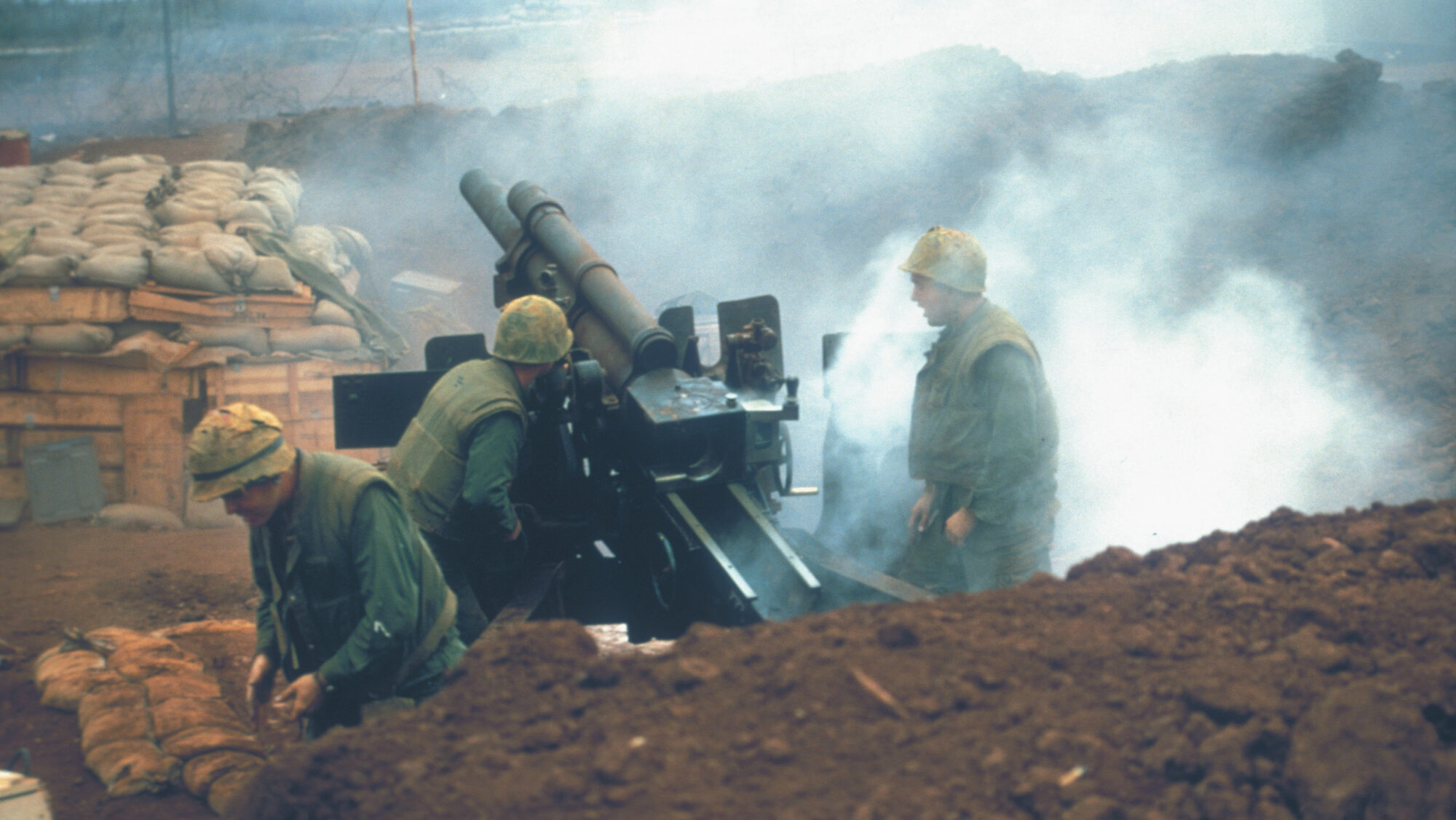
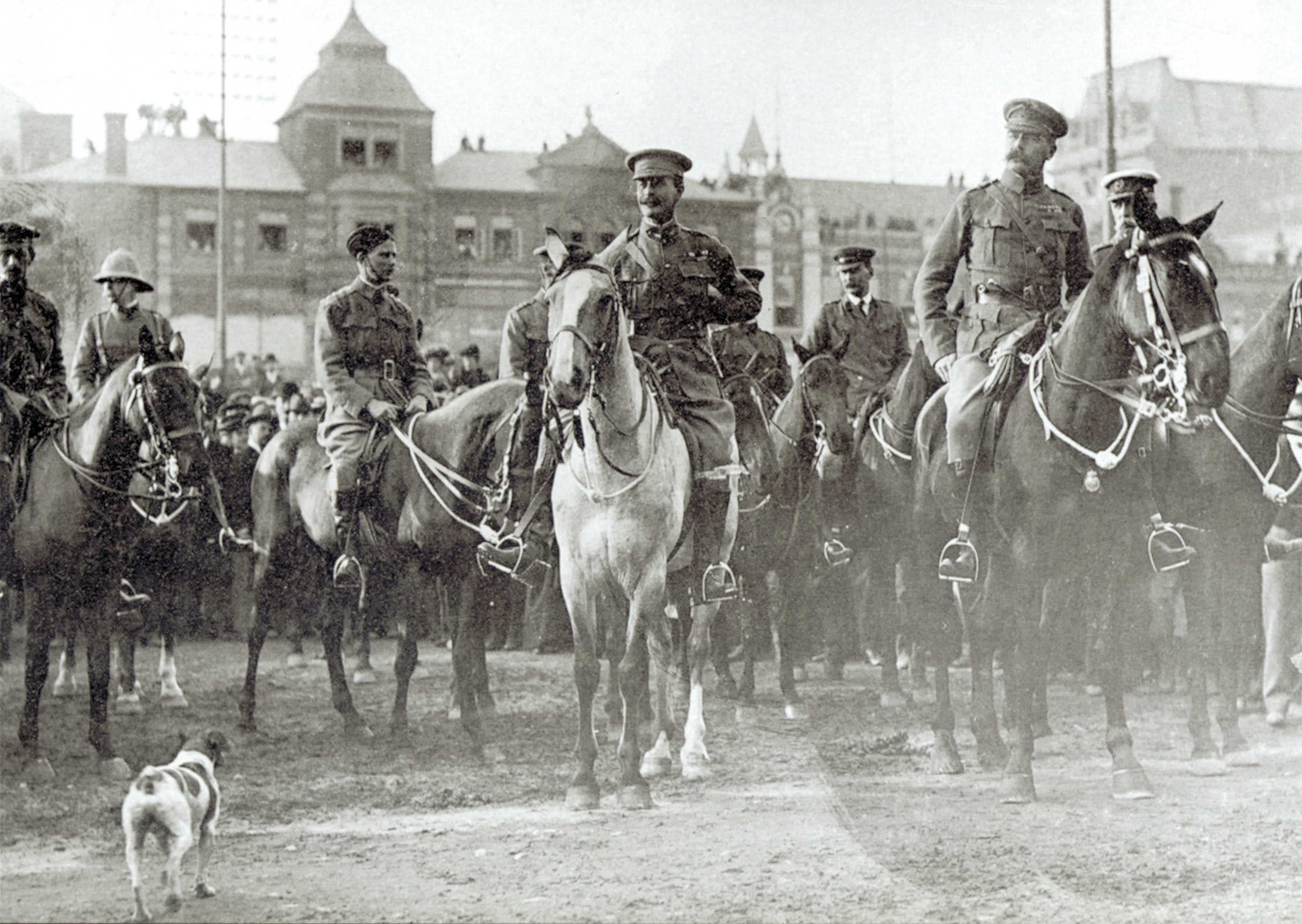
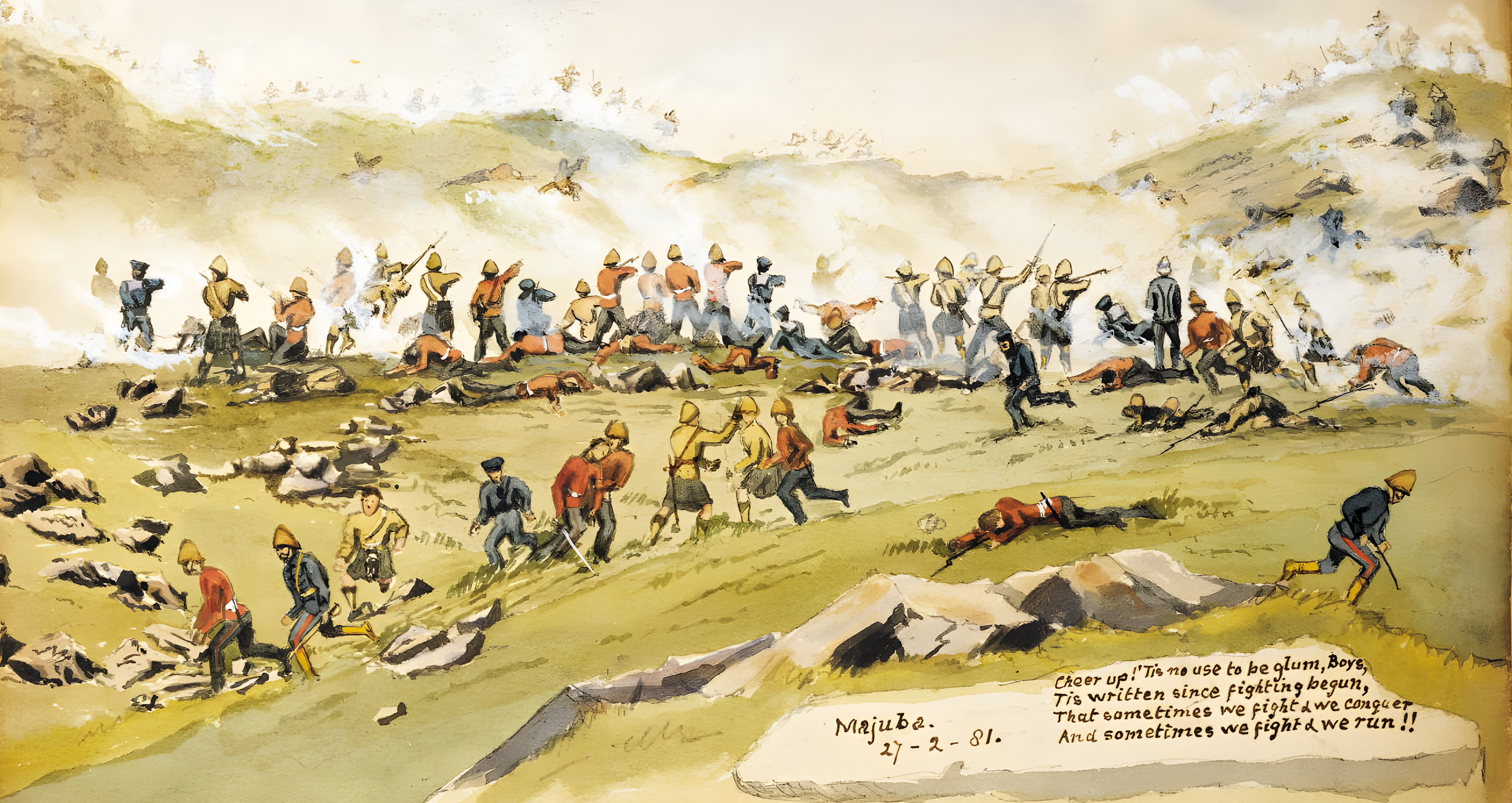

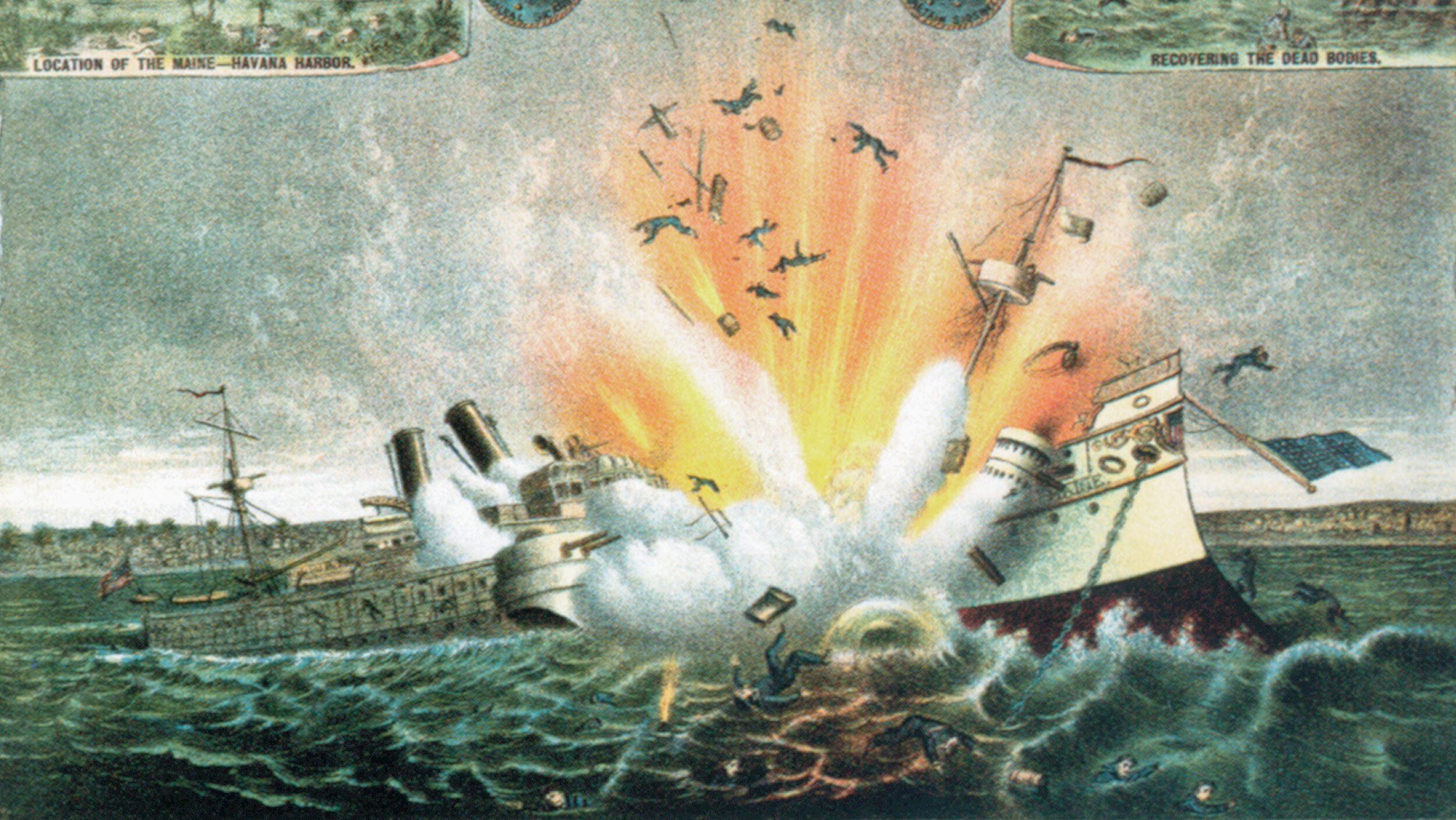
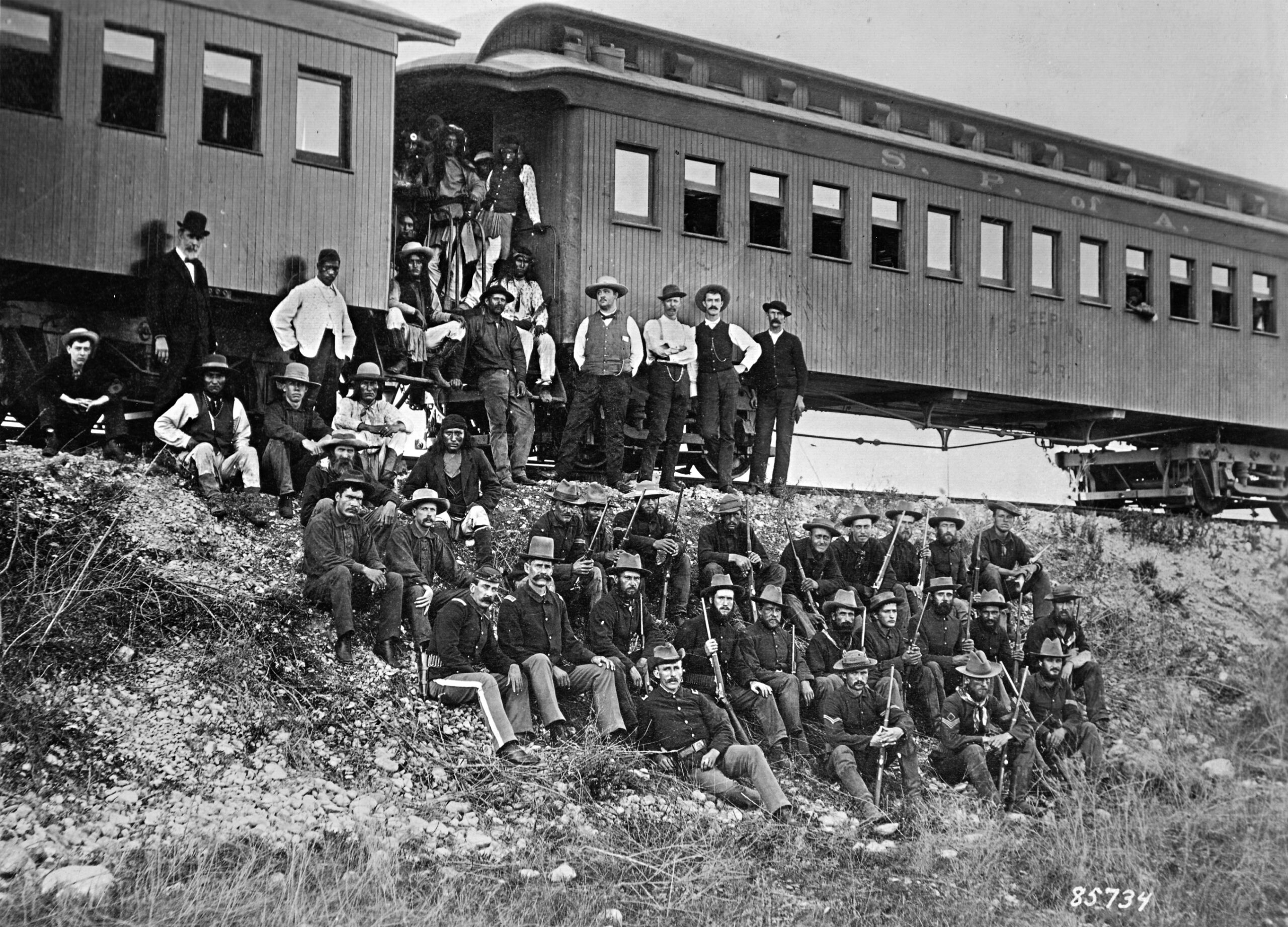
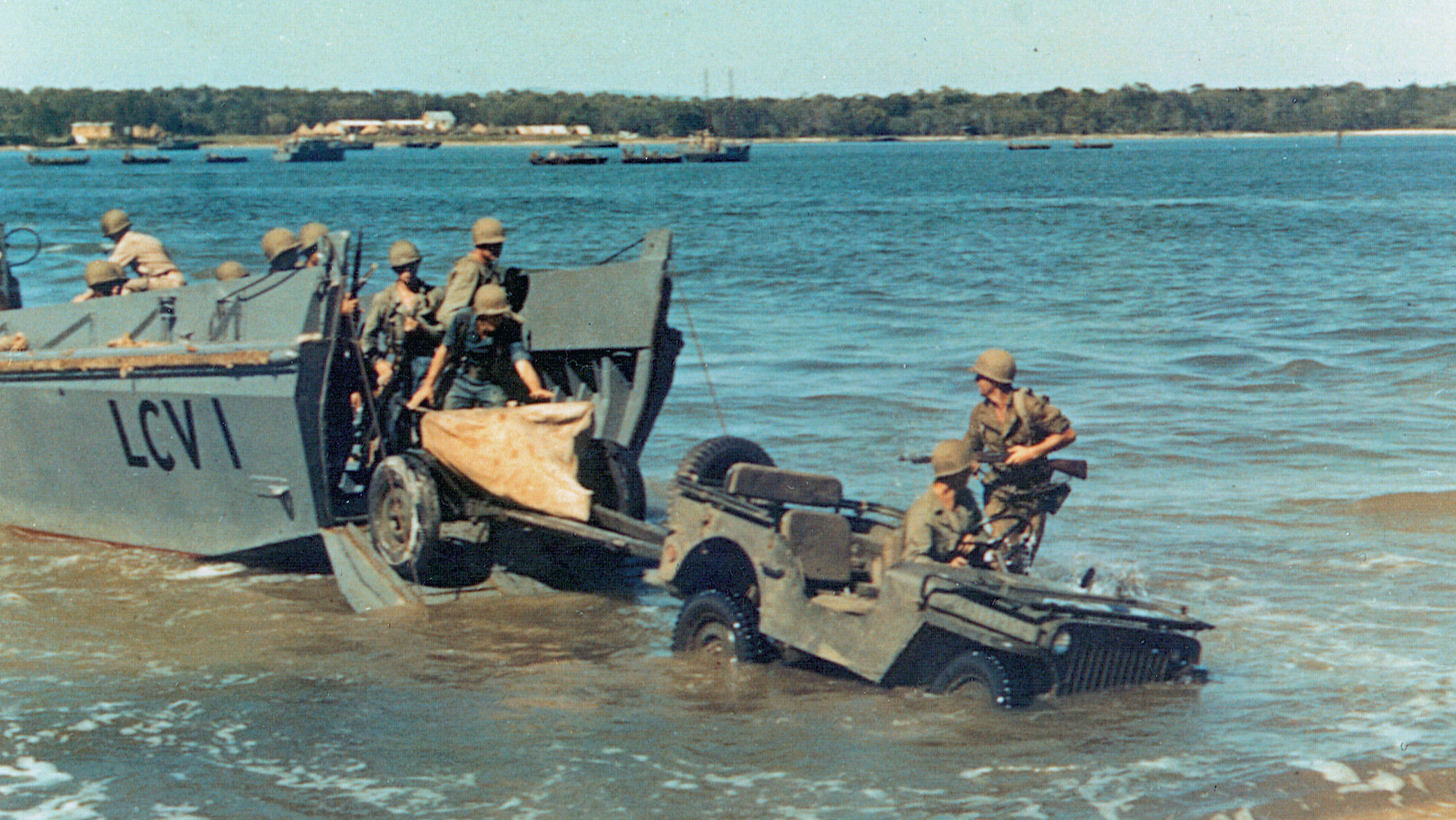
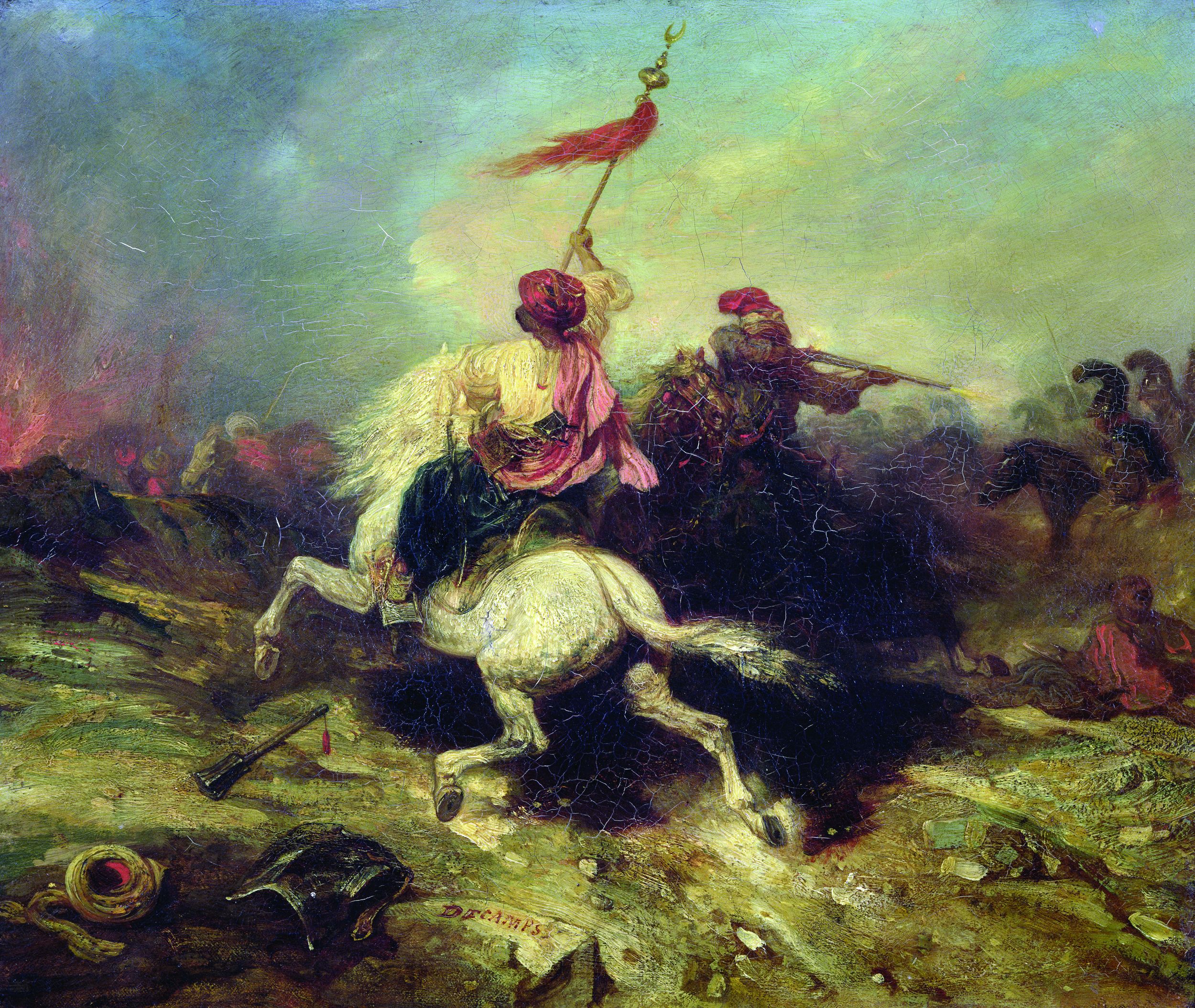
Is that a mortar pit? Looks like a CG 84mm getting cleaned.